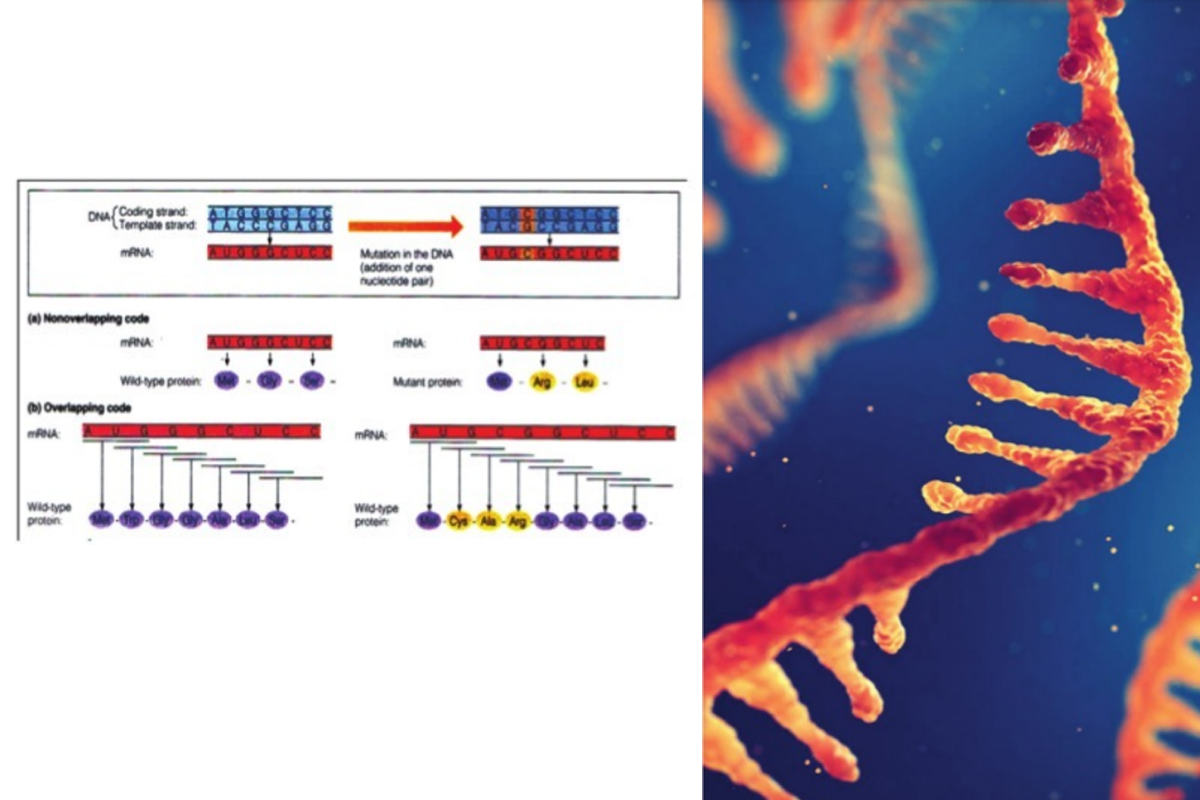DNA confirms rape of a girl in Kannauj
Superintendent of Police ( SP) Amit Kumar Anand gave this information here on Monday, saying that the DNA report has confirmed rape.
An almost six decade-old experiment had found that messenger ribonucleic acid guides the synthesis of polypeptide chains.

Photo: SNS
After the publication of Francis Crick and Sydney Brenner’s historic finding in 1961, it took only five years for the meaning of each of the 64 triplets in the genetic code to be elucidated. Let us first, however, describe the role of ribonucleic acid in the coding system. As we usually describe it, the genetic code refers not to the order of nucleotides in double-stranded DNA but to their order in the single-stranded mRNA molecules that actually direct protein synthesis. mRNA molecules are transcribed from DNA using a base-pairing mechanism similar to DNA replication, with two significant differences. First, in contrast to DNA replication, where both DNA strands are copied, only one of the two DNA strands — the template strand — serve as a template for mRNA formation during transcription. The nontemplate DNA strand, although not directly involved in transcription, is by convention called the coding strand because it is similar in sequence to the single-stranded mRNA molecules that carry the coded message.
Second, the mechanism used to copy sequence information from a DNA template strand to a complementary molecule of RNA utilises the same base-pairing rules as DNA replication, with the single exception that the base uracil (U) is employed in RNA where the base thymine ( T) would have been incorporated into DNA. This substitution is permitted because U and T can both form hydrogen bonds with the base A. During DNA replication the base A pairs with T, whereas in transcription the base A pairs with U. Hence the sequence of an mRNA molecule is not exactly the same as the DNA coding strand, in that mRNA contains the base U anywhere the coding DNA strand has the base T. How do we know that mRNA molecules, produced by this transcription process, are responsible for directing the order in which amino acids are linked together during protein synthesis? This relationship was first demon-strated experimentally in 1961 by Marshall Nirenberg and J Heinrich Matthei, who pioneered the use of cell-free systems for studying protein synthesis. In such systems, protein synthesis can be studied outside living cells by mixing isolated ribosomes, amino acids, an energy source, and an extract containing soluble components of the cytoplasm. Nirenberg and Matthei found that adding RNA to cell-free systems increased the rate of protein synthesis, raising the question of whether the added RNA molecules were functioning as messages that determined the amino acid sequences of the proteins being manufactured. To address this question, they decided to add synthetic RNA molecules of known base composition to the cell-free system to see if such RNA molecules would influence the type of protein being made.
Their initial experiments took advantage of an enzyme called polynucleotide phosphorylase, which can be used to make synthetic RNA molecules of predictable base composition. Unlike the enzymes involved in cellular transcription, polynucleotide phosphorylase does not require a template but simply assembles available nucleotides randomly into a linear chain. If only one or two of the four ribonucleotides (ATP, GTP, CTP, and UTP) are provided, the enzyme will synthesise RNA molecules with a restricted base composition. The simplest RNA molecule results when a single kind of nucleotide is used, because the only possible product is an RNA homopolymer consisting of a single repeating nucleotide.
Advertisement
For example, when polynucleotide phosphorylase is incubated with UTP as the sole substrate, the product is a homopolymer of uracil, called poly (U). When Nirenberg and Matthei added poly (U) to a cell-free protein-synthesising system, they observed a marked increase in the incorporation of one particular amino acid, phenylalanine, into polypeptide chains. Synthetic RNA molecules containing bases other than uracil did not stimulate phenylalanine incorporation, whereas poly (U) enhanced the incorporation of only phenylalanine.
From these observations, Nirenberg and Matthei concluded that poly (U) directs the synthesis of polypeptide chains that consist solely of phenylalanine. This observation represented a crucial milestone in the development of the messenger RNA concept, for it was the first demonstration that the base sequence of an RNA molecule determines the order in which amino acids are linked together during protein synthesis.
The writer is associate professor and head, department of botany, Ananda Mohan College, Kolkata
Advertisement